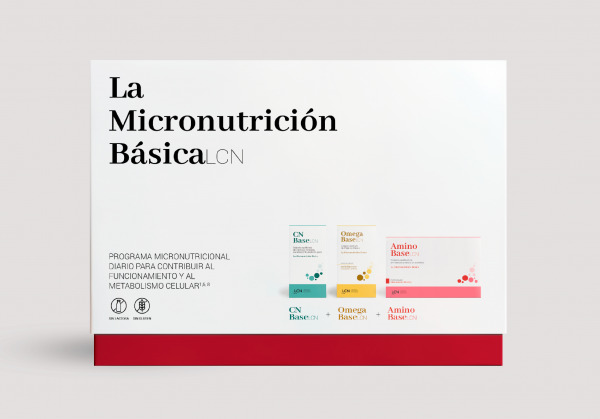Our bodies are exposed to numerous toxic substances on a daily basis (in a generalized, chronic and silent way), such as the following: pesticides, herbicides, plastics, hormones, antibiotics and additives, among others. The body has a detoxification system to neutralize and eliminate these types of substances. The organs responsible for this are the emunctory ones, and they include the liver, kidneys, skin, lungs and intestine. Nonetheless, when the levels of toxins in the body exceed the ability of the detoxification organs to eliminate them quickly, the toxins, as well as the intermediate substances generated in metabolic reactions, accumulate. Diet and, in particular, some micronutrients, such as vitamins, minerals, R-lipoic acid and amino acids, play a very important role because they act as adjuvants in this process and as metabolic cofactors.
Without an adequate micronutritional foundation, the enzymes responsible for detoxification cannot work properly.
In some cases, there may be an increased need for these micronutrients due to factors like toxins, radiations, physical wear and tear, pathological processes, excess weight, stress, etc., and also due to alterations that hinder transformation to their active forms.
The main problem with most environmental pollutants and food contaminants is that they do not cause acute poisoning, which means that the problem is invisible until concentrations in the body are high enough to impact health. Children and people with health conditions are the most vulnerable populations due to detoxification systems that are immature or deteriorated, respectively.
Pollutants can come from industrial discharges and wastes, pesticides and medication residues in water and foods, etc
Pollutants accumulate mainly in the fatty tissues of animals, and therefore meat, large fish species and dairy products account for over 90% of our exposure to these substances.
The increase in pollutants in the environment has been linear since industrialization began. As a result, there are typically more pollutants in urban areas and their surroundings than in rural areas with no ranching or farming activities.
These are some of the most common industrial pollutants found in foods:
Mercury
Mainly contaminates fish and seafood rather than vegetables. Principally fatty fish, and the larger the size, the higher its content. It is highly toxic, affecting mainly the nervous system, liver and kidneys. The excess mercury from amalgam dental fillings should also be taken into account, as these are very widespread in the population.
Cadmium
Mainly contaminates seafood (especially crabmeat), animal organs (liver, kidneys, etc.) and drinking water. Can be present in vegetables. It is highly toxic, affecting mainly the kidneys, and can cause lung, prostate and testicular cancer.
High levels of toxic metals (mercury, cadmium, lead, aluminum, nickel, arsenic, etc.) are frequent in the population due to the following: food, air, occupation, cosmetics and personal grooming products, indoor pollution, amalgam dental fillings, utensils, some medications.
Dioxins, polychlorinated biphenyls (PCBs)
These substances can be present in foods contaminated by vehicle exhaust and industrial discharges and wastes. Meat, eggs, dairy products, fish and seafood are the main foods that can contain them. Dioxins, PCBs and similar substances are highly toxic, producing vision disturbances, hepatotoxicity and depression of the immune system, and they are carcinogenic.
Pesticides
These are substances used to fight plant pests, but they can also produce toxicity in humans and animals through drinking water, food and the environment. The most dangerous ones are prohibited, but their effects persist to the point that significant pesticide levels continue to be found in vegetables, meats and fish. One of the most recent controls found the following: 50% of fruits, 30% of vegetables, and 10% of grains (wheat, rice, barley) contain pesticide residues at levels equal to or lower than allowed; and 3% of fruits, 5% of vegetables and 1% grains contain higher levels than allowed.
Pesticides penetrate vegetable tissues and are not just found on the skin.
All pesticides affect the immune, endocrine and hormonal systems. Their toxicity in the case of farm workers’ exposure is well known (carcinogenic, neurotoxic, hormonal changes, etc.), but the cumulative effects of ingesting residues through food and water containing allowable levels over a long period of time is not known.
Nitrogen fertilizers
These are substances that leave nitrates in the soil, which then enter water and foods, mainly vegetables grown in greenhouses (chard, lettuce, celery, watercress, cabbages, curly endives, spinach, turnips, parsley, radishes, beets, rhubarb, carrots, etc.). Nitrates are easily converted to nitrites, which are toxic and can cause the following: hemoglobin disturbances, thyroid disorders, vitamin destruction (vitamin A, thiamine and riboflavin), allergic-like symptoms, and cancer.
Perfluorinated Compounds (PFCs)
Linked to endocrine disorders, such as thyroid pathology, and other health problems.
Poison monitoring studies in the population are increasing in number and in the toxin levels found.



